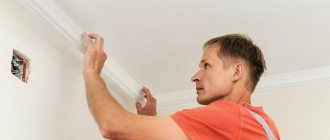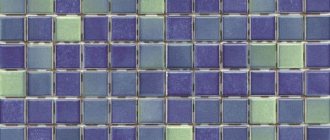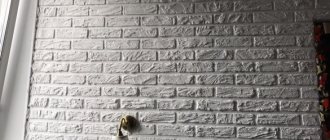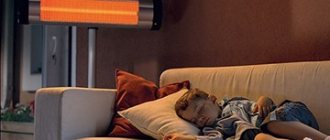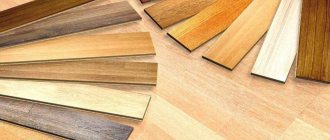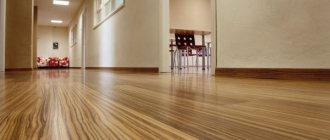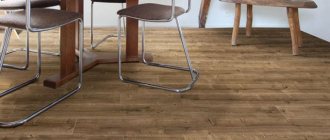Due to cases of explosion of gas cylinders during the installation of suspended ceilings, many refuse to install such a structure. Safety for people is more important than anything. But in fact, not everything is so gloomy, there is not only installation by heating the canvas, but also with a gas gun. You can also heat it with heat. Or you can do without heating at all.
For this purpose, special seamless fabric-based fabrics are used. Moreover, fabric ceilings look in some cases even richer and more luxurious. But they have a high cost. How do ordinary people respond to such ceilings? Let’s see their reviews.
Why don't we talk about the positives?
Yes, because you already know about them. But the most interesting thing is that these well-known advantages, if you dig deeper, turn out to be an ordinary myth.
In principle, fabric ceilings are indeed better, but not at all from the point of view that everyone hears. Their advantages are that:
- They are denser and thicker, which means that tearing them by accidentally poking them with something sharp will not be as easy as film ceilings
- Fabric ceilings do not require heating with a hairdryer during installation, which means that no harmful substances (namely phenol) will fill your room and you will not need to wait several days to air out
- Such ceilings look exactly the same as a perfectly plastered surface. They look very natural and do not resemble film at all
- Their finished canvases are wide, up to 5 meters, which means that you can install a large ceiling without seams. This is a big advantage, since the only thing worse than the seams from soldering on PVC are the seams from soldering PVC. It's very ugly, really.
Otherwise, everything that is said about them is fairy tales from the Vienna Woods. And let's look at all the myths and shortcomings so that you have a very clear understanding of what you are going to overpay for.
Peculiarities
The main property that distinguishes this type of canvas is its light transmittance. Thanks to this property, the chintz covering can be used not only as a decorative surface, but also as a kind of diffuser for a light source located in the ceiling space.
This feature will allow you to create an interior without the usual chandelier in the center of the room. If you hide several lamps directly above the stretched canvas, then until the lamps are turned on, the room will look like it is not equipped with lamps at all. After turning on the lamps, the entire canvas will be a huge lampshade emitting a soft, muted light.
If earlier, when installing a structure with lighting installed in the ceiling space, it was necessary to seek a compromise between the properties of the films that provide the proper level of transparency and appearance, now a beautiful and elegant solution to both problems has appeared.
Myth #1: Fabric ceilings are made from natural fabric
The word “fabric” simply makes us believe that this is, indeed, a piece of natural canvas or just some kind of dense cotton material.
And, naturally, this creates the illusion that the ceiling will be incredibly environmentally friendly and almost with a natural aura... But everything is not so rosy.
They are called fabric because of the technology by which they are made. They are literally woven from threads, but they are not natural! The thread for fabric ceilings is made of polyester, which means that it does not smell of natural ingredients.
But, on the other hand, there is nothing wrong with this. The same faux fur and many other fabrics for clothing also consist of polyester. And nothing, so far no one has died from this.
In addition to the fact that the thread for ceilings is not natural, they are also impregnated with a special polymer composition based on polyurethane. This is necessary so that the ceilings are resistant to light and water.
That is, as you understand, there is nothing environmentally friendly about them except a loud name. Therefore, if this factor was decisive for you, then it is worth reconsidering other options.
If you want an environmentally friendly coating, just whitewash the ceiling and be done with it, because even the best putty and paint are also “chemicals”. But, we still think that you will not reach such fanaticism, because chemical compounds have firmly entered our lives and in order to create a completely environmentally friendly home, it must be either a clay dugout or a log house (which, by the way, is still will have to be impregnated with the hated “chemistry” both outside and inside).
Which rooms is it suitable for?
Considering the overall softness of the design and the possibility of installing hidden lighting that provides dim light, the ideal place to use such a canvas would be the bedroom. It is this ceiling that will fully decorate this room and create a relaxing atmosphere.
The living room is also perfect - you can surprise guests with the absence of a central chandelier and create a unique design thanks to the capabilities of this material
In study rooms and offices, calm shades of canvas and rough texture will not distract attention and will allow you to concentrate on work
Perhaps, only in a children's room, chintz would not be entirely out of place - here there is a kingdom of colors and bright colors that this type of covering cannot always boast of. However, for calm and enthusiastic natures, there is nothing better than a pastel-colored ceiling that does not distract from the main activity - games.
Myth No. 2: Fabric ceilings “breathe”
Yes, this is just an “iron argument”. But not only is this a shameless lie, it is also not very clear why such a dubious advantage is needed.
What does it mean that ceilings breathe? And why, in principle, should they breathe? For what purpose is it necessary to ensure excellent air exchange between the concrete slab and the air in the room? Don't you really have windows and doors?
The assertion that a fabric stretch ceiling perfectly allows air to pass through somehow contradicts the manufacturer’s equally vehement assertion that these ceilings retain water perfectly.
So think for yourself, how can the same ceiling retain water and allow air to pass through?
In principle, if the polyurethane coating is very thin, perhaps such ceilings will “breathe”. But, again, why this “bun”? This will give absolutely nothing.
If the room is humid, fungus will still form. If the room is stuffy, then the ceiling will not save the situation; you will still have to use the windows.
Therefore, feel free to ignore this point too if you are impressed by this particular property.
Details
Practical application of chintz stretch ceiling
A polymer film that can transmit air and partially light flows is ideal as a material for finishing the ceiling space in rooms where special attention is paid to maintaining the microclimate. Primarily in bedrooms, children's rooms and living rooms
The material does not emit toxic substances and does not block normal operation of natural supply and exhaust ventilation, as sometimes happens with glossy PVC membranes.
Thanks to the presence of perforations, it is possible to provide compensation and air flow into the space behind the tension fabric and back. As a result, chintz fabric does not flap, as gloss does, and does not begin to sag from air pressure when windows or doors are opened. This may seem like a trifle, but this property turns out to be quite useful; for example, most owners prefer to install a chintz ceiling even in sanitary facilities and hallways.
Disadvantages of chintz fabric
Calico ceilings are installed using hot technology, which is used when installing many membrane coverings. Load-bearing profiles must be installed on the walls in advance. The tension fabric will be straightened and fixed on the baguettes, and harpoon clamps will also be welded. What does a chintz stretch ceiling look like after installation? This is shown in the photo. Next comes the most difficult operation, and it is required to heat the tension fabric of the chintz ceiling as evenly as possible and properly crimp it around the perimeter. The work is not that difficult, but you need to be extremely careful when handling the chintz film.
Advantages of a fabric ceiling
There are many more positive aspects when choosing chintz fabric. First of all, PVC chintz is much cheaper than fabric stretch ceilings. At the same time, the level of convenience and comfort in a room with chintz decor for the ceiling, if properly planned, will not be inferior to fabric decoration. The second important advantage is its high resistance to pollution. PVC film is still easier to clean and wash than fabric material. The non-shiny surface, which is very similar to a satin texture, makes it possible to mount and combine all light sources, without restrictions on the number and method of installation.
Interestingly, chintz stretch ceilings make it possible to fully use graphics, ink painting and photo printing.
If the room requires an interior with an unusual design and design, then ideally you need to use chintz ceilings in combination with lighting fixtures that are located in the under-ceiling space.
Ceiling surface design
The high quality of the polymer base of the chintz ceiling makes it possible to apply patterned relief on the surface without resorting to direct photo printing. Using a similar method, texture is applied to vinyl-type wallpaper. But, unlike modest wall decor, stretched canvas will look very impressive and expressive. This is one of the reasons why stretch chintz ceilings are in incredibly high demand, despite fierce competition from satin and fabric materials.
If you want to decorate the surface of the ceiling, for example, in a living room or hall, then the ideal choice would be a regular snow-white canvas onto which a film image is glued. The quality of adhesion of the film to the ceiling canvas is very high, and therefore there is no need to worry that the image may begin to peel off. Moreover, the presence of holes in the surface of the canvas guarantees the absence of air bubbles, even if you try to glue the picture with your own hands.
Calico ceilings with lighting
A common technique for arranging a suspended ceiling system is the simultaneous use of illumination of chintz fabric with photo wallpaper. For example, images of flowers or vegetation on the surface of chintz will look much more picturesque and realistic against a luminous warm background. Using a similar method, three-dimensional images are created from thin PVC films, for example, birds or butterflies on the ceiling surface.
Myth #3: Fabric ceilings are more durable
This is also not true. Here, rather, it’s just the opposite. If, in terms of density and properties, fabric ceilings should, in theory, last longer, then in terms of performance characteristics they are in many ways inferior to ordinary PVC.
Some specifics: fabric ceilings do not have a perfectly smooth, but slightly bumpy surface (due to the weaving of threads). This means that dirt and soot will settle in the pores much faster than on a perfectly smooth canvas.
And not only do such ceilings get dirty faster, but they are also more difficult to clean. There are many reviews online that people had to remove such ceilings after a couple of years because they turned yellow and looked stale, but they couldn’t really be washed.
They also write that fabric ceilings can turn yellow on their own, regardless of the presence of a gas water heater or stove in the room.
To be fair, only ceilings from unknown manufacturers suffer from this. But global brands guarantee the pristine appearance of the ceiling for at least 5 years. And they don't lie.
Tips and recommendations for caring for suspended ceilings in a cottage
A suspended ceiling needs special care, and if it is installed in a wooden house, special attention should be paid to cleanliness issues. Experts recommend using various options for cleaning ceilings:
Dry cleaning with a vacuum cleaner. This is a quick way to get rid of small dirt and cobwebs.
You need to act carefully so as not to scratch the PVC in the house. Dry cleaning. Allows you to remove dust from a stretch ceiling without much effort
Since the fabric is quite delicate, when dry cleaning it is recommended to use soft napkins, rags with short, not hard pile, or flannel. You need to act carefully, cleaning is done carefully, without unnecessary physical impact. Wet cleaning. To do this, take warm water, a small amount of detergent and a soft cloth (dish sponge). Powdered cleaning agents, abrasives and harsh chemicals are strictly prohibited.
Regarding the frequency of cleaning, everyone must decide this issue independently. If there is a stove indoors, or a PVC structure is located in the kitchen, cleaning should be frequent (at least 1-2 times a week). If you believe reviews about suspended ceilings in a private home, this will allow you to maintain perfect cleanliness and prevent the appearance of difficult-to-remove stains and dirt.
Myth-5: Fabric ceilings don’t burn
They even burn a lot, just wonderful! The only thing is that they melt a little slower and such a large amount of phenol is not released into the room as when a PVC ceiling burns.
But, in general, by and large... What difference does it make to you? Are you going to stand in the room and watch during a big fire? And, if you do, then before the ceiling catches fire, the walls, floor, curtains, and furniture will begin to burn. And they will contain no less phenol, because it is now everywhere! Starting from floor coverings to regular wallpaper.
And, in general, this is just a very dubious advantage and it’s not worth considering it seriously as a plus.
Colors
Although materials for suspended ceilings are available in a limited range of colors, they can also be painted or applied with the desired pattern. This opportunity is actively used by designers and even ordinary citizens.
To ease the problem of choosing a color, it is worth considering the main options:
White color is not as simple as it seems. It has a lot of shades and variations. For example, in the Descor assortment there are two white shades: classic, warm and cold, with an ashy tint. The first option is closer to natural; it gives the structure a natural look and sets off other interior items. The second option makes the ceiling flawless, conservative and strict.
Beige and yellow materials are more chosen for the kitchen space, dining area and bathroom.
Black ceilings are mostly appropriate in halls and corridors. A hall with such a ceiling will look a little like a cinema.
Options with glitter, which is created from millions of tiny particles, are created for stylish, bright people. Such materials can be found in the Clipso catalog. Chic, shine, beauty – that’s exactly what I want to say when looking at these luxurious materials.
Pastel ceilings will be appropriate in bright rooms. They will be able to regulate the riot of colors, highlight expressive walls and place the necessary accents. Another option is appropriate when the design is created exclusively from light shades. Often in such rooms there is only one bright object: curtains, flower pots, a carpet on the floor or a piece of furniture.
Dark and bright, expressive materials should be chosen for laconic rooms. In this case, the ceiling will be the main element that will harmoniously fit into the calm interior.
Original textures of paintings
With the help of original textured products, you can create unusual effects in the room.
Chameleon
This unique ceiling design has a very interesting texture, which can change its shade depending on the viewing angle and type of lighting.
Mosaic
It has an expressive, beautiful structural pattern and is distinguished by a slight shine. Small polyhedrons in different colors and shades go well with various decorative elements.
Mother of pearl
They shimmer with a soft pearl sheen, which gives the entire interior a special luxury and elegance.
Metallic
It will shimmer with a characteristic silver sheen and change color saturation due to the intensity of lighting.
Leather
Models imitating leather especially stand out in the interior and create the feeling as if the ceiling surface is actually covered with natural products.
Reptiles (snakes, crocodiles)
They have an appearance as close as possible to the original. Such textured canvases look completely unique and give the entire interior a special personality.
Giraffe
Ceiling products with such a pattern add color, uniqueness and effectiveness to the room, and add a touch of exoticism to it.
Mirror
They create very interesting optical illusions and visual effects in space. Glossy film enlarges the room and raises the height of the ceiling.
The photo shows a kitchen-living room with a textured mirror stretch fabric in purple.
Marble
Marble texture model is no different from real stone. The ceiling surface with such cladding looks very natural and allows you to create a luxurious, pompous and rich interior.
The photo shows a textured stretch fabric with imitation marble in the living room.
Cost of textured canvas
The price depends on the manufacturer and seller, as well as on the complexity of installation. Multi-tiered structures are more expensive; you have to pay extra for each lighting fixture separately. But in general, the cost per square meter is approximately this:
- translucent ceiling - film 250-900 rubles, fabric 1,500;
- patterned - 400-500;
- silk - 500-850;
- metallic - 500-1,000;
- marble - 1,000-1,500;
- velvet - from 1,000;
- “chameleon” - from 1,500;
- with glitter - from 2,000.
Classic canvases are cheaper:
- gloss - from 200 rubles;
- matte - from 100;
- satin - from 180.
